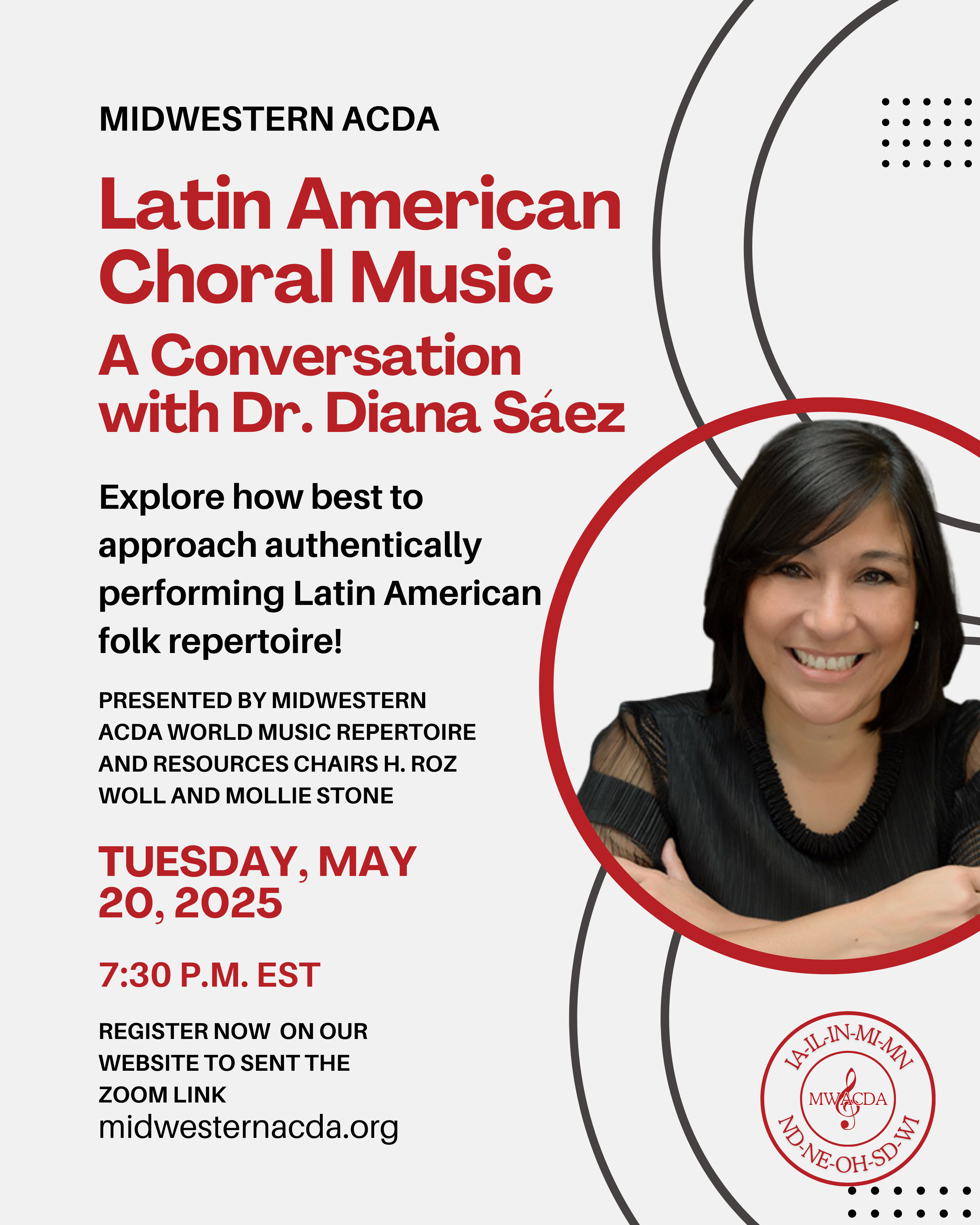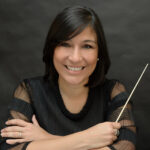
Latin American Choral Music – A Conversation with Dr. Diana Sáez
World Music Repertoire and Resources by H. Roz Woll and Mollie Stone
As we approach the rush of end-of-school-year concerts, it feels nearly impossible to think about programming for the coming year. But after talking with Dr. Diana Sáez for just an hour, we find ourselves poring over her videos and scores online, dreaming excitedly of which pieces to do with our own ensembles.
We asked Dr. Sáez her opinions on how to approach the breadth of Latin American folk repertoire that she has translated into the choral realm. Her answers affirmed the need to do the work when learning music from other cultures, and she gave us a helpful framework through which to begin approaching Latin American music with integrity: 1) Context, 2) Rhythms, 3) Instruments, and 4) Texts.
Context
We enjoyed talking about how Latin-American music is not a monolith, and that each country/region/culture has its own diversity of music. In addition to Spanish influences, it is particularly important to know which elements of a song have evolved from indigenous or African musical traditions, and we must research the historical contexts of those influences. She said, with good cheer, that there is no excuse to do an uninformed performance of another culture’s music now that we have access to the internet. We have so many ways in which to learn about the cultural and historical context in which any given piece was created/composed and performed.
Rhythm
It was energizing, even in our short interview, to hear Dr. Saéz go into greater depth about the importance of learning rhythms that distinguish regions and cultures, emphasizing that the conductor should first understand and feel comfortable with the music before teaching it. In one sense, this was exciting because it rejects the claim that “those who can, do, and those who can’t, teach.” Diana emphasizes that we must be able to internalize the rhythms, sing them, and move to them before teaching them to our singers. Enhancing rhythmic skills makes us stronger musicians in all genres, and understanding how these rhythms evolved from dance helps us be more deeply engaged in our bodies when we sing.
Instruments
It was helpful to hear how she translates instrumental sounds into her choral arrangements. She writes vocal parts that imitate percussion instruments, recognizing that not every choir will have access to expert instrumentalists. For the conductor, knowing which instrument the vocal part is imitating is key to shaping the music and amplifying its vitality.
Text
Diana emphasized the importance of gaining familiarity with pronunciation variation within any given region, as well as taking care to understand specific phrases that might have different meanings from country to country. She shared examples of commonly misunderstood poetic phrases, and reminded us that the opportunity to learn subtleties of pronunciation and delve deeper into the translation can only make us better able to connect with each other.
Dr. Sáez is engaging, deeply knowledgeable, and it was a joy to speak with her. We love that she holds us to high standards (there’s no excuse not to do the work), but that she approaches the challenges with compassion. Dr. Saez remarked about how, within Latin-American ensembles, singers from any one region or culture might struggle with an element of another’s musical tradition. Before her current position as Director of Choral Activities at Towson University, she directed a Latin American ensemble, Cantigas, for 25 years, composed of singers from all over the Americas. When they prepared a Venezuelan piece, with uniquely complex rhythms, “the Puerto Ricans would suffer, the Argentinians would suffer, and the Venezuelans loved it.” Everyone can learn!
If you would like to program Dr. Saez’s arrangements, one place to start is “Temporal,” found in a newly published anthology, Accessible and Beautiful by Marques L. A. Garrett and Edryn Coleman. We asked what other pieces she would like to have more well-known, and one of her favorites is Festejo. To learn more not only about this song, but to hear Dr. Sáez expand on the ideas written here, please join us for an online workshop we are hosting with her on Tuesday, May 20, at 7:30 PM ET. We so look forward to getting to interview her again and sharing her dynamic work with you!
Click here to register for the wonderful opportunity to hear from Dr Diane Sáez.

